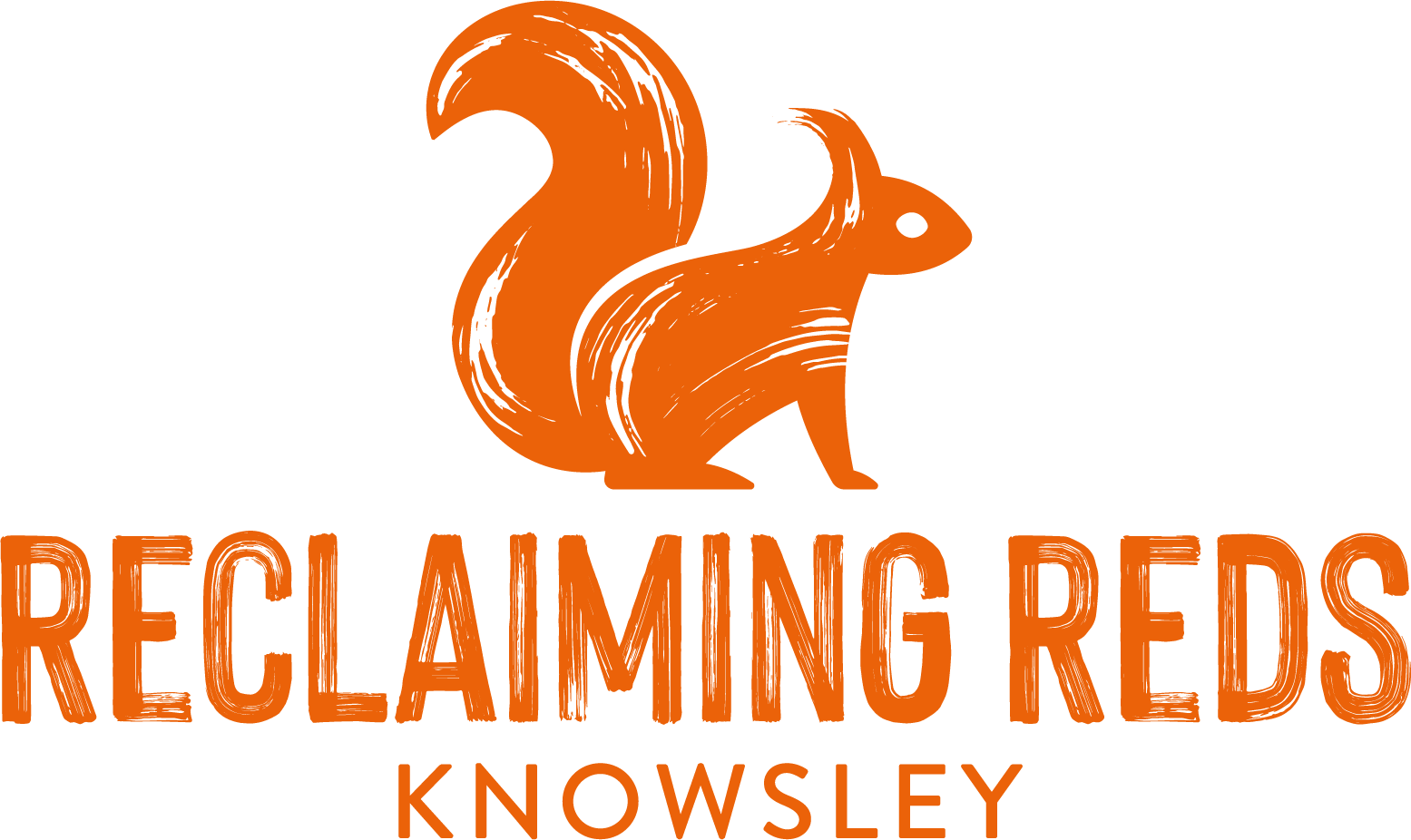Reclaiming Reds: making Knowsley a place for red squirrels
Reclaiming Reds is a recently launched project funded by the National Lottery Heritage Fund. It aims to directly connect the public with strategic conservation action to pave the way for red squirrels to thrive once again on the Knowsley Estate and surrounding areas.
A green refuge in the heart of a predominantly urban area, the Knowsley Estate has always been home to the native red squirrel, Sciurus vulgaris. The estate combines exceptional natural habitats with a concerted effort to manage the landscape in favour of red squirrels.

Surveys documented the species’ presence on the estate, with sightings between Knowsley and the local stronghold along the Formby coastline monitored by way of submission to Merseyside BioBank, the Local Environmental Records Centre. The sightings suggested a degree of migration between Knowsley and the stronghold itself, which is carefully managed by Lancashire Wildlife Trust.

Unfortunately, a decline in sightings of red squirrels on the estate coincided with an increase in sightings of the invasive grey squirrel, Sciurus carolinensis (1) along the same 1km transects. This is concurrent with research that associates the decline in red squirrels with the presence of grey squirrels throughout the UK (2).
The last sighting of a red in an official survey was in 2015. Trained staff made observations out with the surveys in 2017, but red squirrels have sadly not been recorded on the estate since - despite an intensive camera trapping effort from 2017 onwards. The specific driver of this localised extinction is currently unknown. However, the spread of infectious disease facilitated by grey squirrel presence and grey squirrel competition reducing red squirrel fitness, breeding and juvenile recruitment (3,4) are the most likely causes.

Reclaiming Reds
Reclaiming Reds is a two-year National Lottery Heritage Fund funded project which aims to pave the way for red squirrels to thrive once again on the Knowsley Estate and surrounding areas. A two-stranded community engagement programme within Reclaiming Reds will give the opportunity for a wide array of people to get involved with the project; from basic learning opportunities through to volunteering to be trained in the relevant skills needed to directly act and contribute to the delivery of all elements of the project.
Using successful projects from around the UK as models (5,6), Reclaiming Reds will begin to reduce grey squirrel numbers on the Knowsley Estate and surrounding areas, harnessing the support of trained volunteers to undertake monitoring and management. Reducing grey squirrel numbers in an area is evidenced to simultaneously reduce two key threats grey squirrels pose to red squirrel survival: resource competition and disease (7).

Future Vision
The long-term goal is the creation of a low-density grey squirrel corridor between two red squirrel strongholds, one being the Knowsley Estate and the other Formby.
Long term really is the key phrase to keep in mind when we think of red squirrels being able to thrive again at Knowsley. Two years is the a blink of an eye in conservation terms and it is unrealistic to imagine red squirrels will fully return within the lifetime of Reclaiming Reds. However, this project provides the first steps to giving red squirrels a future at Knowsley, paving the way for future conservation action.
Any future conservation action will be guided by the impact and successes of Reclaiming Reds and other work to conserve red squirrels in the area. Release of red squirrels is a subject often raised, but it is equally important to consider the possibility of natural recolonisation through the proposed low-density grey squirrel corridor. Records show migration of red squirrels in the area was once common and it is possible this can begin again - given the right conditions.
What we can say for certain is, whatever course of action is taken after the initial Reclaiming Reds project we know it will be driven by robust research that creates an evidence base for action to save red squirrels in the area.
Further information
You can find out more about Reclaiming Reds, including volunteer opportunities, on our website: https://reclaimingreds.co.uk/
And get the latest updates on social media:
Facebook: Reclaiming Reds
Twitter: @reclaimingreds
Instagram: @reclaimingreds
Bridget Johnson is the Research and Conservation Manager at Knowsley Safari, which works in partnership with Knowsley Safari Foundation to deliver Reclaiming Reds and ensure a future for red squirrels in the area.
(1) https://www.gov.uk/guidance/invasive-non-native-alien-animal-species-rules-in-england-and-wales
(2) Shuttleworth, C., Lurz, P., & Gurnell, J. (Eds.). (2016). The Grey Squirrel: Ecology & Management of an Invasive Species in Europe 2016. European Squirrel Initiative.
(3) Chantrey, J., Dale, T.D., Read, J.M., White, S., Whitfield, F., Jones, D., McInnes, C.J. and Begon, M., (2014) European red squirrel population dynamics driven by squirrelpox at a gray squirrel invasion interface. Ecology and Evolution, 4(19), pp.3788-3799
(4) Gurnell J, Wauters LA, Lurz PWW, Tosi G (2004) Alien species and interspecific competition: effects of introduced eastern grey squirrels on red squirrel population dynamics. J. Anim. Ecol. 73:26-35
(5) Shuttleworth CM, Robinson N, Halliwell EC, Clews-Roberts R, Peek H, Podgornik G, Stinson M, Rice S, Finlay C, McKinney C, Everest DJ, Larsen KW (2020) Evolving grey squirrel
(6) Bryce, J., & Tonkin, M. (2019). Containment of invasive grey squirrels in Scotland: meeting the challenge. Island invasives: scaling up to meet the challenge, (62), 180.
(7) Schuchert, P., Shuttleworth, C. M., McInnes, C. J., Everest, D. J., & Rushton, S. P. (2014). Landscape scale impacts of culling upon a European grey squirrel population: can trapping reduce population size and decrease the threat of squirrelpox virus infection for the native red squirrel?. Biological invasions, 16(11), 2381-2391.